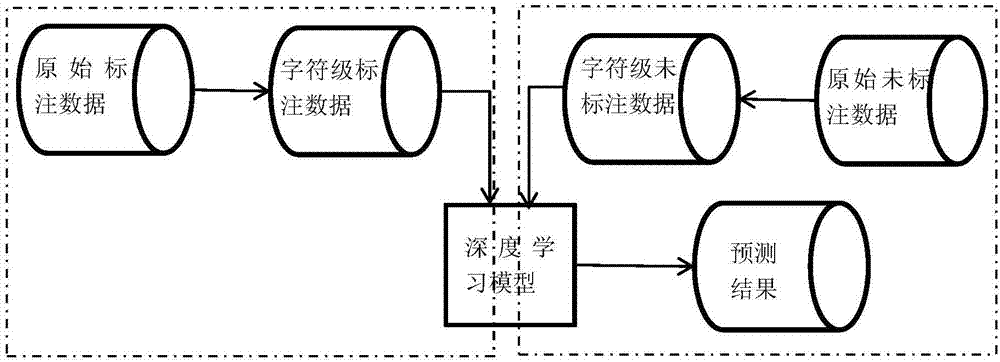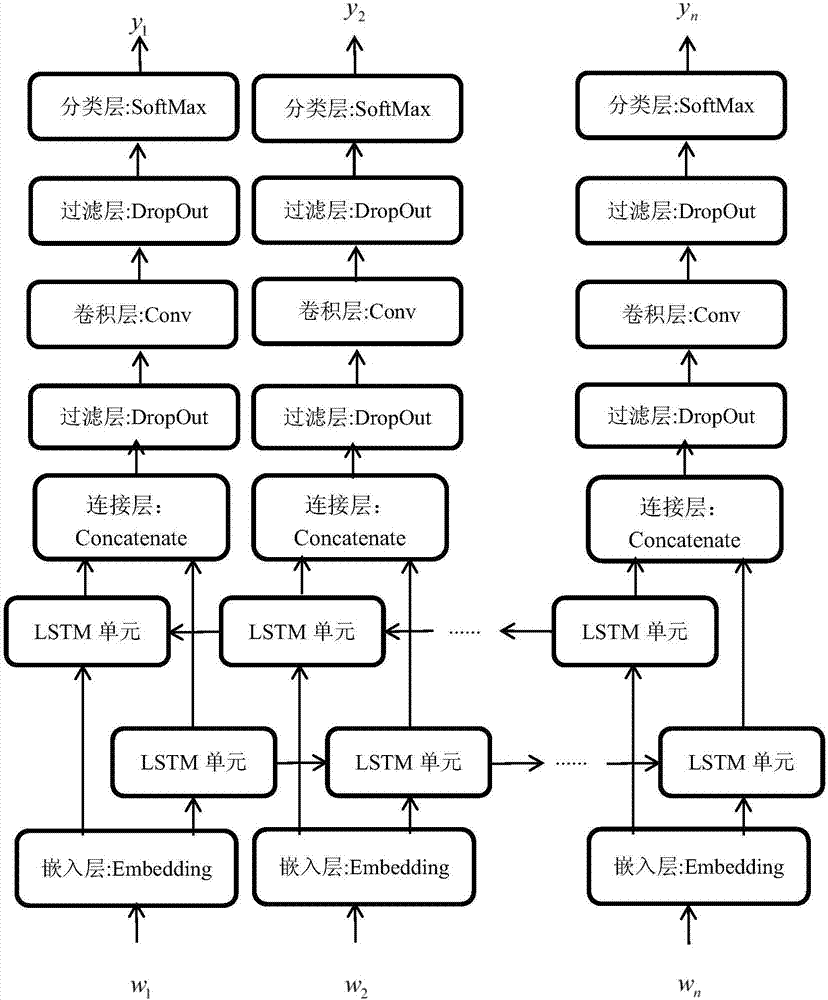Mixed corpus word segmentation method based on Bi-LSTM-CNN
A word segmentation method, bi-lstm-cnn technology, applied in natural language data processing, special data processing applications, instruments, etc., can solve the problems of not being able to identify unregistered words, loss of word segmentation accuracy, relying on dictionaries, etc., to avoid unregistered words. Words, the effect of precision improvement
- Summary
- Abstract
- Description
- Claims
- Application Information
AI Technical Summary
Problems solved by technology
Method used
Image
Examples
Embodiment Construction
[0055] In order to make the above-mentioned features and advantages of the present invention more comprehensible, the following specific embodiments are described in detail in conjunction with the accompanying drawings.
[0056] The method process of the present invention is as figure 1 shown, which includes:
[0057] (1) Training stage:
[0058] Step 1: Transform the original training mixed corpus data OrgData into character-level mixed corpus data NewData. Specifically: using the BMES (Begin, Middle, End, Single) marking method, each word with a label in the original training mixed corpus data is segmented at the character level. Then the character at the beginning of the word is marked as B, the character at the middle of the word is marked as M, the character at the end of the word is marked as E, and if the word has only one character, it is marked as S.
[0059] Step 2: Count the characters in NewData to obtain a character set CharSet. For example, suppose there are t...
PUM
 Login to View More
Login to View More Abstract
Description
Claims
Application Information
 Login to View More
Login to View More - R&D
- Intellectual Property
- Life Sciences
- Materials
- Tech Scout
- Unparalleled Data Quality
- Higher Quality Content
- 60% Fewer Hallucinations
Browse by: Latest US Patents, China's latest patents, Technical Efficacy Thesaurus, Application Domain, Technology Topic, Popular Technical Reports.
© 2025 PatSnap. All rights reserved.Legal|Privacy policy|Modern Slavery Act Transparency Statement|Sitemap|About US| Contact US: help@patsnap.com



